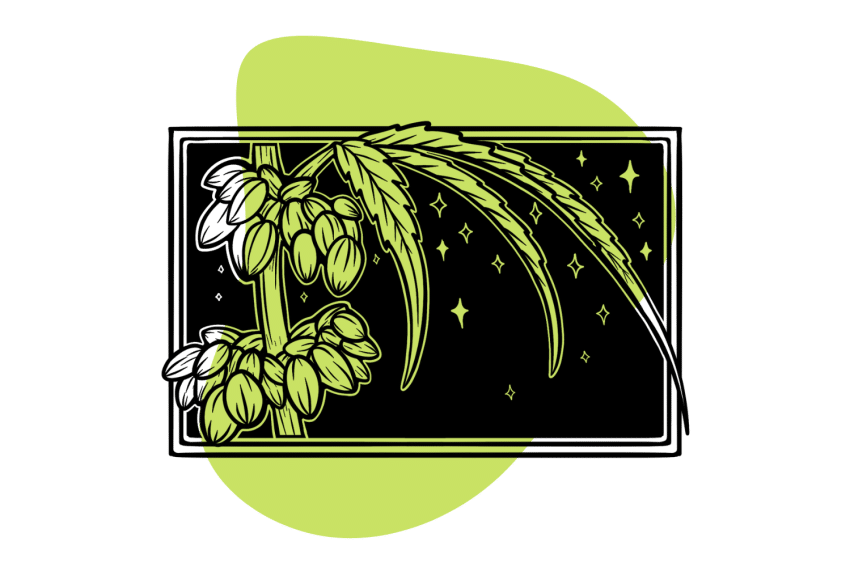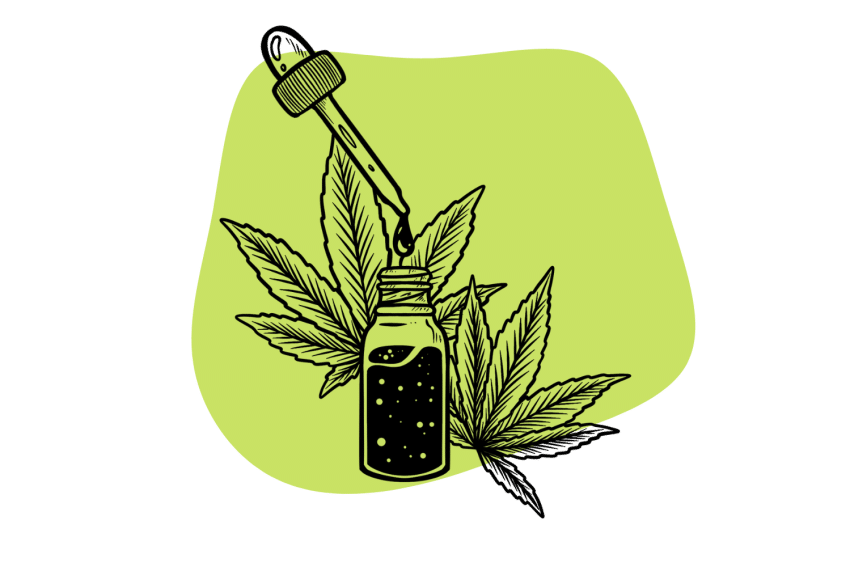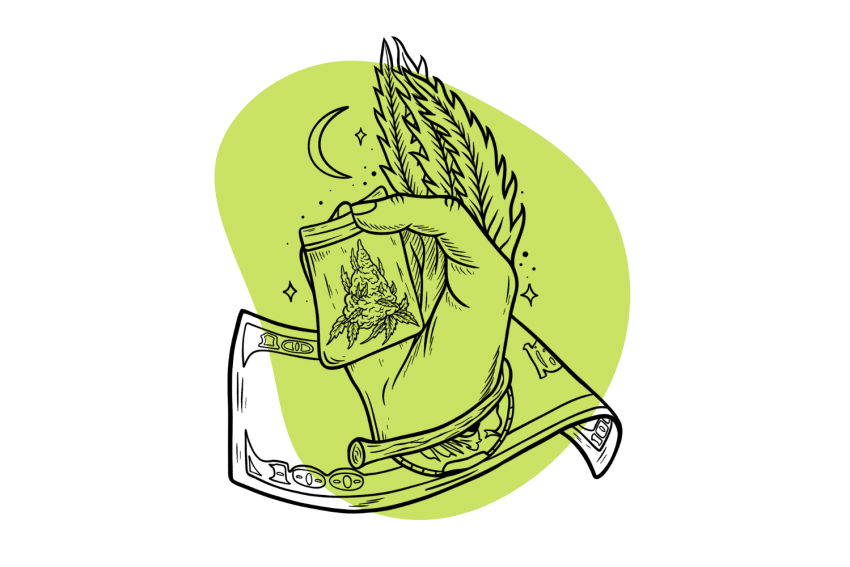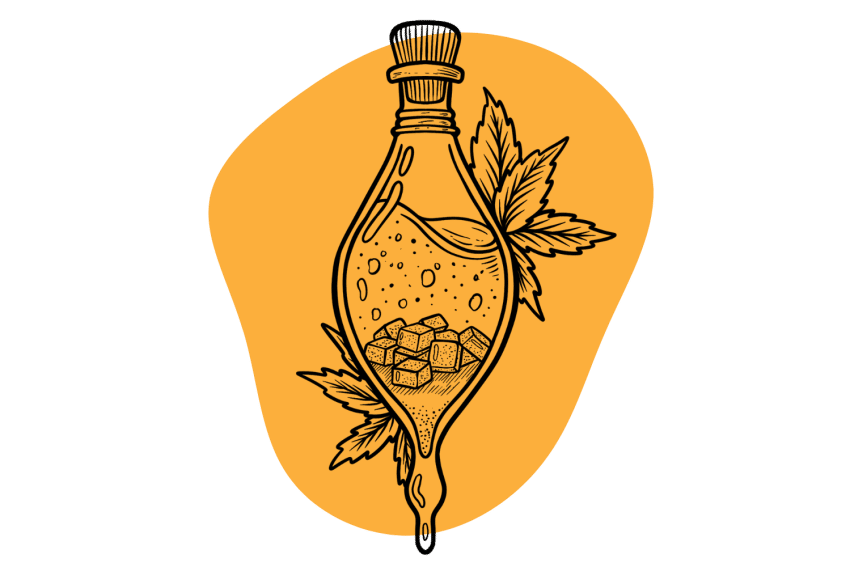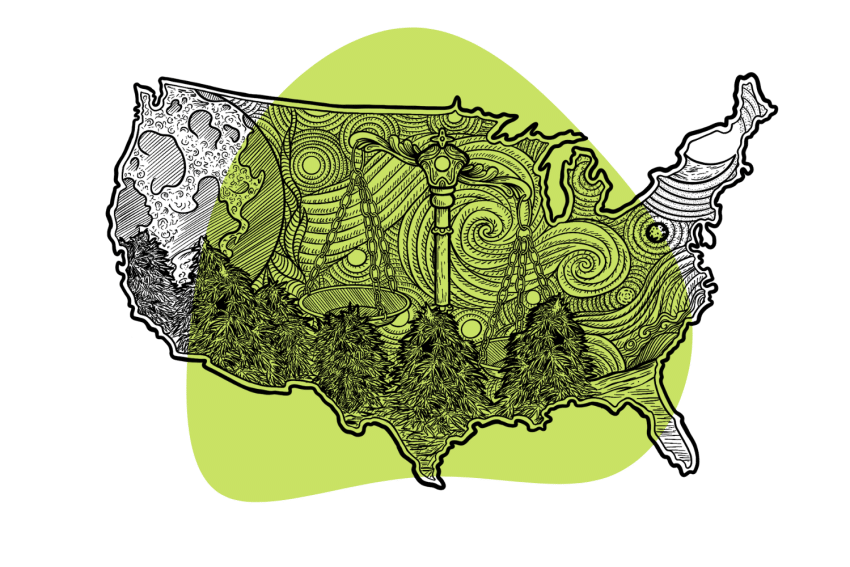How Much Does A Gram of Weed Cost & More Importantly, How Far Will It Stretch?
A gram of weed can mean a lot of different things for different smokers. For some, it may be enough for a week of one-puffers. For others, a gram can be gone faster than a sneeze.
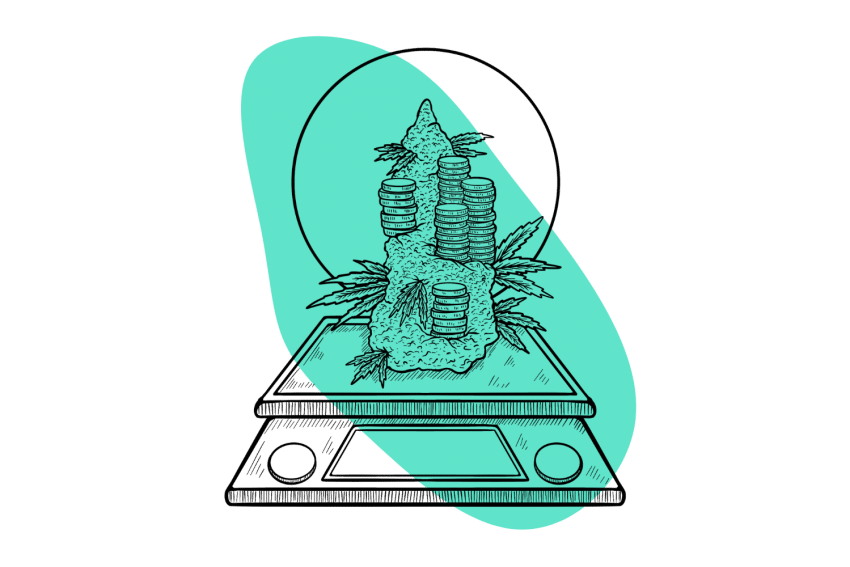
A gram is typically the smallest amount of flower you can buy from a dispensary — perfect for trying a new strain.
In this article, I’ll tell you how much you’ll pay for a gram of weed, how many joints you can roll with it, the factors that drive costs up or down, and the different measurements.
Related: Cannabis 101 | How Much Does Weed Cost?
What Does a Gram of Weed Cost?
Although the price varies state-by-state, you can expect a gram of mid-quality weed to cost anything from $6 to $20. Of course, quality is the main determining factor, but it’s not so linear.
Recently, the Oxford Treatment Center surveyed the price of weed in every state. The measurement they used was for an average joint of 0.66 grams of weed.
On average, a gram of medium-quality weed costs about $9.40, but there are some outliers. Washington, DC, for example, has the most expensive weed, where a gram can cost up to $20. The other states stand between these extremes, but no place is near DC’s insane prices — it’s a special case due to strict cultivation laws and a lack of a regulated market [1].
Meanwhile, the prize for the least expensive weed goes to Mississippi, with Oregon and Washington State getting second and third place, respectively. In the Pacific Northwest, a gram of weed costs a little less than $7, while in Mississippi, it costs just $6.
Finally, another thing to keep in mind is that weed is usually cheaper per gram when you buy more [2]. For example, an eighth will be cheaper than 3.5 separate grams of weed, and so on.
Other Weed Portions:
- 1 gram of weed (0.035 oz)
- An eighth of weed (3.5 g)
- A quarter of weed (7 g)
- A half-ounce of weed (14 g)
- An ounce of weed (28 g)
- A quarter pound of weed (114 grams)
- A half pound of weed (227 grams)
- A pound of weed (454 grams)
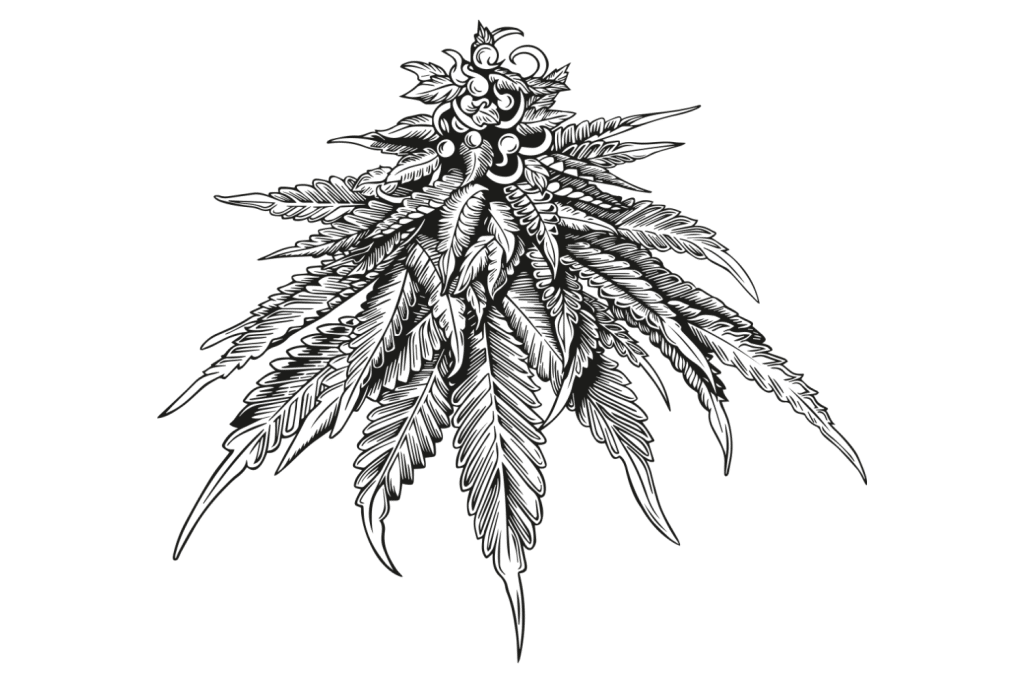
What Can Affect the Cost of a Gram of Weed?
In a legal market, weed is yet another product subject to different factors that affect its price. Let’s explore them in depth.
1. Local Laws & Taxes
As no federal law regulates weed, the matter depends on each state, resulting in laws that can be more or less restrictive in different ways. A state with restrictive regulations will result in higher costs than a more lenient one, as is the case with Washington, DC, and Oregon, for instance.
State, county, or city taxes can also drive costs up, translating directly to the final price. This, along with the costs of running a shop, can make weed very expensive.
2. Strains & Weed Quality
Weed has different strains with unique effect profiles. Many of these are scarce or require special care to grow properly, so they can be much more expensive than a regular strain.
The quality of the herb runs on a similar line: higher-quality weed costs more. That relates to the amounts of THC that give a more potent high. These plants are harder to obtain, so prices rise accordingly.
3. Location
Growing weed in some places is easier than in others, causing the costs to differ.
Harsher climates make it harder to grow weed, so the prices increase.
Meanwhile, locations with favorable soil and weather make it significantly easier to grow weed on a larger scale. Ultimately, importing weed can be cheaper than growing it locally, but that also adds cost.
Location also plays a huge role in the cultivation method, which can impact the final price of weed. Indoor cultivation can be very expensive compared to growing it on a farm [3], adding more cost due to labor and utilities.
4. Supply & Demand
Finally, supply and demand are the classic economic factors — when the supply can’t keep up with demand, weed prices can jump significantly.
It can happen the other way around as well, with demand being too low or supply being so high that the price plummets. The drop in price due to this factor usually isn’t extreme, but it can lead to significant discounts as retailers try to get rid of their stock.
How Many Joints Can I Roll With a Gram of Weed?
To answer this question, we first need to know how much weed is typically used for a single joint. There are no rules regarding the amount since people are free to make their joints however they want.
With a single gram of weed, you can roll a nice joint that you can easily share with friends. Of course, it’ll be quite thick, so you’ll need a larger piece of rolling paper to avoid making a mess.
Now, if you’re alone or want your purchase to last longer, you can split the gram and make two or three smaller joints. They won’t go far, but this works well if you don’t need much.
Ultimately, you can split a gram into fourths or fifths and roll extra thin pinners, but they’ll become largely ineffective as a gram is already a small amount.
However, you can help make up for the smaller size by purchasing a higher-quality strain. As these usually contain more THC, a pinner can be as potent as a joint of mid-quality weed. Then again, it depends on your budget, as not everyone can spend that much on the herb.
If high-quality weed is not an option, perhaps you’d be better off spending a little more and buying an eighth instead of a gram. This amount offers more value — it usually costs less, is easier to split evenly, and lets you make larger joints.
Weed Measurements 101
In this section, we’ll discuss the different measurements of weed. You may already know some or even all of them, but a quick refresh may be useful.
First is the gram, which you already know well by now. As I mentioned before, it’s usually the smallest amount of weed you can buy from a dispensary and usually enough for a couple of joints.
Then comes the eighth, short for an eighth ounce and approximately 3.5 grams of weed or 2-4 buds, and makes roughly 3-7 joints. People prefer it to buying single grams, but it depends on your use. Depending on quality, its price can range between $20 and $65.
After the eighth comes the quarter ounce. A quarter, or quad, contains 7 grams of marijuana.
This should be enough for 7-14 joints or about five blunts. They are generally composed of a good handful of nugs, varying in size depending on the strain.
A quarter can go from $60 to $100, with an average price of about $68. Quarters are ideal for people looking to stock for an entire week or even two.
Finally, there’s the half-ounce, or 14 grams, and the ounce, which is approximately 28 grams. Both are significant amounts of weed, and an ounce is the maximum amount permitted in many states.
I recommend you check your local weed regulations to avoid exceeding the amount you can legally carry — you don’t want to end up in jail or pay a hefty fine. The strictest legal states only allow you to carry a few grams outside your house.
There are two more measurements: the pound (16 oz) and the kilogram (1,000 grams). However, they are far above the legal limits for personal use, so they are only used during manufacturing and wholesale distribution [4].

FAQs
Here are answers to a few common questions regarding the cost of weed.
1. How long does a gram of weed last?
If you use weed daily, it can last a couple of days, so long as you don’t use the whole gram in a single joint.
2. How many grams of weed do I need for a week?
The answer depends on how often you use it. For some people, a gram is more than enough, while others take 2 or 3 grams per week.
3. What’s a dub sack?
A dub sack is slang for a $20 bag of weed, which people began to use when weed was still illegal in most places. In those days, $20 would buy 2 grams of weed, but as prices have changed, a present-day dub sack may offer little more than that.
References
- Schauer, G. L. (2021). Cannabis policy in the United States: Implications for public health. JNCI Monographs, 2021(58), 39-52.
- Donnan, J., Shogan, O., Bishop, L., Swab, M., & Najafizada, M. (2022). Characteristics that influence purchase choice for cannabis products: a systematic review. Journal of cannabis research, 4(1), 1-27.
- Zheng, Z., Fiddes, K., & Yang, L. (2021). A narrative review on environmental impacts of cannabis cultivation. Journal of Cannabis Research, 3(1), 1-10.
- Pacula, R. L., Blanchette, J. G., Lira, M. C., Smart, R., & Naimi, T. S. (2021). Current US state cannabis sales limits allow large doses for use or diversion. American journal of preventive medicine, 60(5), 701-705.

